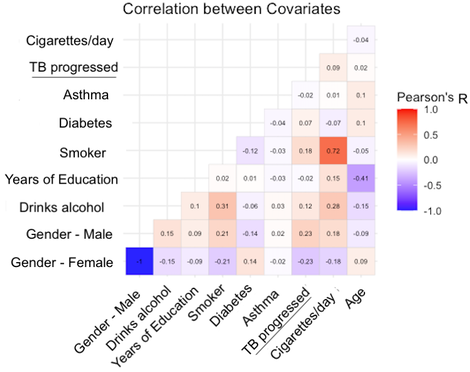The majority of South Africans have been exposed to M.tb, with a latent tuberculosis infection (LTBI) prevalence of 26% at 5–8 years, 53% at 14–17 years and >75% at 25 years. Population-wide LTBI, high TB incidence, and low HIV infection allow us to capture a large sample size and ideal cases-control ratio (48% cases, 90% HIV-negative, and n=1100 currently collected). Each participant in our study has matched DNA and epidemiological data (smoking behavior, alcohol consumption, comorbidities [HIV, diabetes, asthma], education and SES, and anthropometrics).

|
High TB burden populations tend to have a higher prevalence of the proximate determinants of TB progression including smoking and alcohol consumption, HIV, and diabetes. It is possible these risk factors covary with genetic ancestry and self-identified ethnicity, and therefore confound the association between allele frequency and TB status in any GWAS. The correlation matrix below of our epidemiological covariates has weak correlations throughout which is promising for future GWAS analyses. |